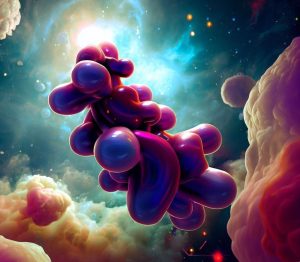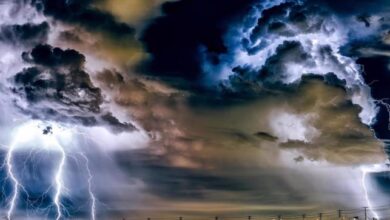A Clue to Extraterrestrial Life

 Tryptophan is one of the 20 amino acids that are essential for life on Earth. It is a building block of proteins and a precursor of important molecules such as serotonin and melatonin.
Tryptophan is one of the 20 amino acids that are essential for life on Earth. It is a building block of proteins and a precursor of important molecules such as serotonin and melatonin.
Tryptophan is also rare in the universe, as it is easily destroyed by ultraviolet radiation and cosmic rays. Therefore, finding tryptophan in interstellar space is a remarkable discovery that could have implications for the origin and distribution of life in the galaxy.
A team of researchers led by Susan Iglesias-Groth from the Instituto de Astrofísica de Canarias (IAC) in Spain has reported the detection of tryptophan in a molecular cloud complex called Perseus, where stars and planets are formed. The team used data from the Spitzer Space Observatory, a space telescope that operated from 2003 to 2020 and observed the infrared spectrum of the sky.
The researchers focused on a stellar system within Perseus known as IC 348, which is an active star-forming region with hundreds of young stars and protoplanetary disks. They analyzed the infrared spectra of IC 348 and compared them with laboratory measurements of tryptophan.
They found a match between the spectral features of tryptophan and those observed in IC 348, confirming the presence of this amino acid in interstellar space for the first time.
The discovery of tryptophan in Perseus is not a coincidence, according to Iglesias-Groth. She has previously found other key molecules for life in the same region, such as water, carbon dioxide, hydrogen cyanide, acetylene, benzene, polycyclic aromatic hydrocarbons, and fullerene.

These molecules are thought to be synthesized in the interstellar medium by various chemical reactions involving atoms, ions, radicals, and dust grains.
“IC 348 is an exceptional star formation region and an extraordinary chemical laboratory,” Iglesias-Groth said in a press release announcing the finding, whose results are published in the Monthly Notices of the Royal Astronomical Society. “Given the spectral coverage in the infrared and the large spectroscopic database from the Spitzer telescope, this amino acid was the obvious candidate to search for in space.”
The detection of tryptophan in Perseus suggests that this amino acid could be incorporated into comets and asteroids that form around young stars. These rocky bodies could then deliver tryptophan and other organic molecules to planets that orbit these stars, potentially seeding them with the ingredients for life.
This scenario is supported by the evidence that some meteorites that have fallen on Earth contain amino acids and other complex organic compounds. Some scientists have proposed that these extraterrestrial materials could have played a role in the origin of life on our planet, or at least contributed to its diversity and evolution.
The finding of tryptophan in interstellar space also implies that this amino acid could be widespread in the Milky Way galaxy, increasing the chances that life could emerge and thrive on other worlds.
This possibility is further boosted by the recent discoveries of thousands of exoplanets, some of which are located in the habitable zones of their host stars, where liquid water could exist on their surfaces.
As Iglesias-Groth said, “The presence of tryptophan in regions where planets are formed indicates that this amino acid can be found on planets outside our solar system. This increases our expectations for finding extraterrestrial life.”
Greetings, explorer! We thank our supporters from the bottom of our hearts for their generous donations that keep anomalien.com alive. If you’d like to join the cause and help us continue to deliver amazing articles, please consider making a donation. Let’s keep the 👽 smiling!Follow us on Instagram, Twitter and Telegram for interesting and mysterious bonus content!




